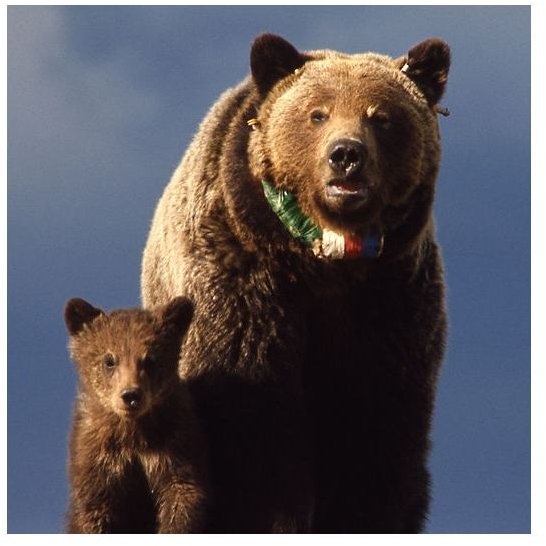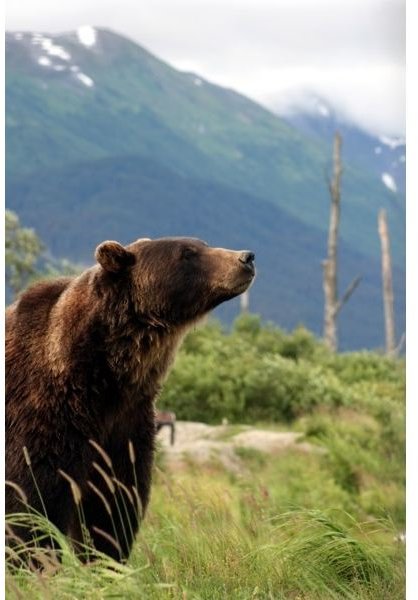Fun and Interesting Facts about Grizzly Bears
The Big, Brown Grizzly
The grizzly bear is a subspecies of the brown bear. These large bears originated in Europe and Asia and traveled to North America about 50,000 years ago. They once roamed throughout most of western North America and the Great Plains. As civilization grew, the range and number of grizzlies declined. Grizzly bears are unique from other brown bears because they prefer interior habitat and warmer climates. Below are more interesting facts about grizzly bears.
Description
Grizzlies are 5-8 feet tall and can weigh up to 800 pounds. Their fur is normally a dark brown color but can vary from a light cream to black. The hairs on their backs and shoulders can have a white tip, giving it a “grizzled” look. Grizzly bears, unlike black bears, have a noticeable hump on their backs. The hump is made of muscle which gives them additional strength when running or digging. They have black noses, short, rounded ears, and claws that are about the size of an adult human finger.
Habitat
Today, in the United States, grizzly bears live inland in Alaska and in select areas of Washington, Idaho, Montana, and Wyoming, such as Glacier National Park and Yellowstone National Park. They can be found living in a variety of habitats, including forests, woodlands, valleys, and meadows (near rivers and streams).
Behavior
Grizzlies are mainly solitary animals but they can be found gathering together at prime fishing spots. They normally avoid contact with humans but can be dangerous if they feel their food or cubs are threatened.
Diet
Despite being a top-of-the-food-chain predator, grizzly bears eat mostly nuts, berries, leaves, and roots. However, they will also eat insects, fish, and small and large mammals, including rodents and moose.
Reproduction

Grizzlies reach sexual maturity at about five years old. They mate in late spring and early summer but implantation of the embryo is delayed until the female enters hibernation. She gives birth to usually two cubs in January or February (while still hibernating). The cubs will stay with their mother for 2-3 years.
Hibernation
During the summer and fall, grizzly bears will build up fat reserves by eating large amounts of food. In late fall or early winter, they will dig a hole in a hillside to hibernate. Although their temperature, heart rate, and metabolic activity slows down and they live off of their stored fat reserves, they are not truly hibernating (since they are able to wake themselves during their winter sleep). Hibernation normally lasts 5-8 months. By the time they emerge, the cubs can weigh about 20 pounds.
More Information
The following are more interesting facts about grizzly bears:
• The grizzly bear is a good swimmer and can run quite fast (about 30-35 mph) despite its huge size.
• Young grizzlies can climb trees but they lose this ability as they age.
• Grizzly bears can smell better than hound dogs.
• While preparing for hibernation, they can gain up to three pounds a day.
• In the wild, grizzlies live about 25 years.
Sources Used
https://animals.nationalgeographic.com/animals/mammals/grizzly-bear.html
https://www.nwf.org/Wildlife/Wildlife-Library/Mammals/Grizzly-Bear.aspx
https://www.defenders.org/wildlife_and_habitat/wildlife/grizzly_bear.php
Photo Credit
Grizzly image courtesy of https://www.flickr.com/photos/85853969@N00/1052682322/
Grizzly with cub image courtesy of https://commons.wikimedia.org/wiki/File:Yellowstone-grizzly-00156.jpg (in the public domain)
